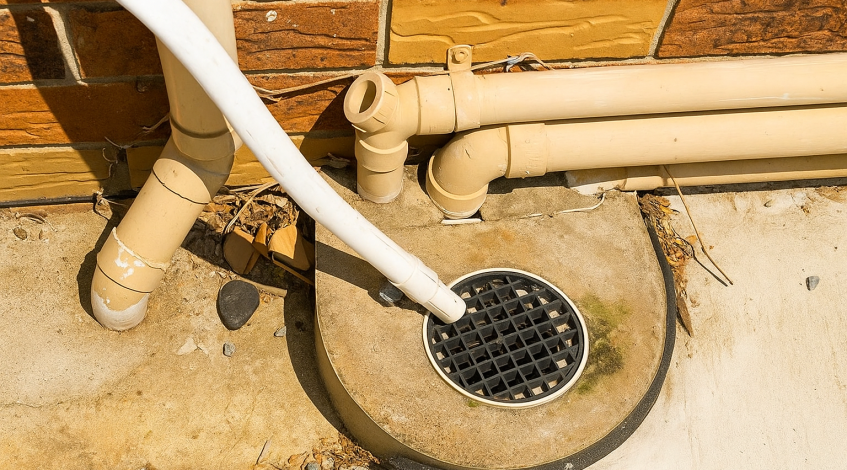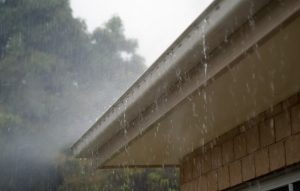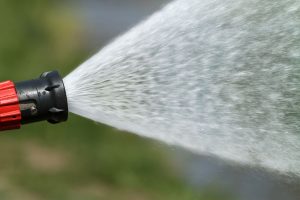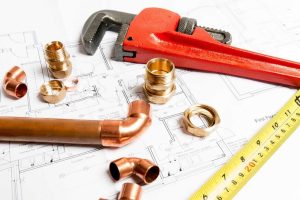Clearing gutters, fixing leaking taps, or even change a washer are just a few of the common routine maintenance tasks.
But have you ever stopped to think about what actually prevents sewage from flooding your home?
For many homeowners, the overflow relief gully (ORG) is one of the most overlooked components of the plumbing system, yet it plays a role in protecting your home.
This outdoor fitting keeps the waste diverted away from indoor spaces during a sewer blockage. Ignoring it could mean the difference between a clean home and a costly, hazardous overflow.
Key Takeaways:
- Check that your gully is raised above ground level, clearly exposed, and free from buildup or debris.
- The ORG must be positioned at least 150mm below the lowest internal household fixture.
- Your overflow relief gully isn’t a feature you want to compromise for the sake of appearance.
The Role of an Overflow Gully in Your Plumbing System
An overflow relief gully (ORG) serves as an outdoor release point for sewage. It keeps waste away from indoor spaces during a drainage system failure.
An ORG is set at a depth below other household drain points, most often the toilet or shower base, where blockages first strike. When a backup happens, the cap lifts to relieve pressure and push sewage into the yard. This simple, external solution helps guard the interior of your home from raw sewage exposure.
The Best Plumbers Club outlines tips to help you maintain a functional and compliant overflow gully.
Keep the Overflow Gully Visible and Clear of Obstructions
Keeping it visible means there are no pot plants, mulch, outdoor furniture, or landscaping features covering or surrounding it.
If the grate or cap can’t pop off instantly in a high-pressure event, wastewater won’t be diverted away from your home. Instead, it could back up through your indoor drains, leading to a hazardous and costly overflow inside your bathroom.
A blocked or disrupted overflow relief gully, whether due to landscaping, pool backwash, or stormwater drainage can fail to operate as intended. In some cases, the result can be as damaging as sealing it shut.
A quick visual inspection can go a long way in preventing sewage from flooding your home. This simple step is your first line of defense in protecting your property and health.
Don’t Disable the Gully’s Built-In Safety Function
The key safety feature of an overflow relief gully is its ability to ‘pop off’ during a sewer blockage. It works by releasing pressure and diverting waste outside.
To guarantee it functions as designed, regularly inspect the gully to confirm it’s above ground level, free of debris, and that the grate or cap isn’t jammed or sealed.
For those wanting to maintain an aesthetically pleasing yard or hide the gully in landscaping, professional plumbers can offer compliant solutions. They may slightly reposition the gully or adjust the surrounding grade to maintain both drainage efficiency and visual appeal.
Note that your overflow relief gully isn’t a feature you want to compromise for the sake of appearance.
Understand Your Legal Duty to Maintain Drainage Gullies
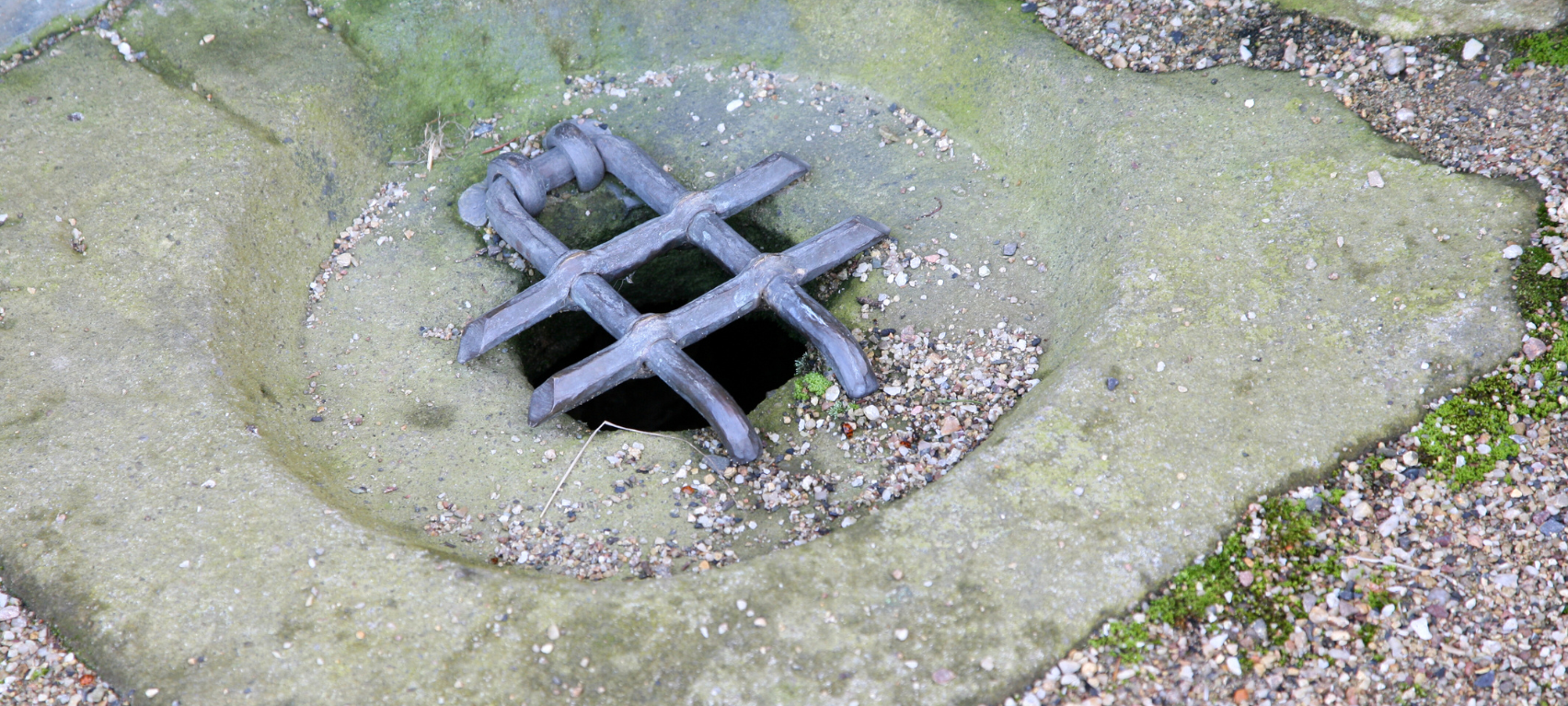
Homeowners in Australia are fully responsible for maintaining their property’s overflow relief gully. You have to make sure that it is correctly installed, accessible, and functional.
- Must be positioned at least 150mm below the lowest internal household fixture—such as a toilet or shower drain.
- The top of the ORG should also sit a minimum of 75mm above ground level. This prevents rainwater or surface runoff from entering the sewer system, especially during heavy rainfall.
Homes built before 1976 may not have an ORG in place unless renovations or plumbing upgrades have been carried out. Some older homes may still have a disconnector gully or vent instead. If that’s the case, a licensed plumber can assess and, if necessary, convert it to a compliant overflow relief gully.
If you’re unable to locate your ORG, it may have been accidentally buried under landscaping or concrete. Note that only licensed plumbers are permitted to install or modify overflow relief gullies. DIY modifications can compromise compliance and increase the risk of property damage.
Incorrect Gully Height Can Lead to System Failure
If you’ve hired a reputable local plumber to install your overflow relief gully, you can feel confident they’ll position it in the right location. However, correct placement is only part of the equation. Its effectiveness depends just as much on how it’s installed.
- Must be lower than the lowest internal waste outlet, usually the toilet or shower base.
- If it is installed too high, it won’t relieve pressure correctly. Instead, sewage may back up into your home, particularly in bathrooms or laundries.
- Must also sit at least 75mm above ground level to prevent stormwater from entering the sewer system.
- If the gully is installed too low or level with the ground, heavy rain can flood the system. May increase the risk of sewer backflow and system failure.
Let the Best Plumbers Handle Your Gully Installation
Your overflow relief gully must be correctly placed, properly installed, and fully functional when your sewer system needs to release pressure and waste. This is not an area where guesswork or shortcuts are acceptable. Engaging one of Australia’s top plumbers ensures the job is done right and your home remains protected.
Your search for “local plumbers near me” ends today with the Best Plumbers Club.
Best Plumbers Club connects you with Australia’s most trusted and highly reviewed local plumbers. We’ve already built the network—simply send us a message, and we’ll take care of the rest.
Frequently Asked Questions
What is an Overflow Relief Gully (ORG)?
A drain-like fitting located outside your home and is a part of your property’s sewer system. It acts as a safety release valve.
How to Unblock an Overflow Relief Gully?
Remove any physical obstructions (like leaves, mud, or debris) that prevent water from flowing through the gully.
- Wear gloves and protective gear.
- Remove the grate or cover.
- Clear visible blockages by hand or with a plumbing snake.
- Flush the gully with clean water to test flow.
How to Clean an Overflow Relief Gully?
Remove any debris from around and inside the gully (e.g., leaves, mulch, stones). Take off the plastic grate and clean it separately. Flush the pipe with a hose and check if it’s draining properly. Make sure that the cap is loose enough to pop off during overflow events.

